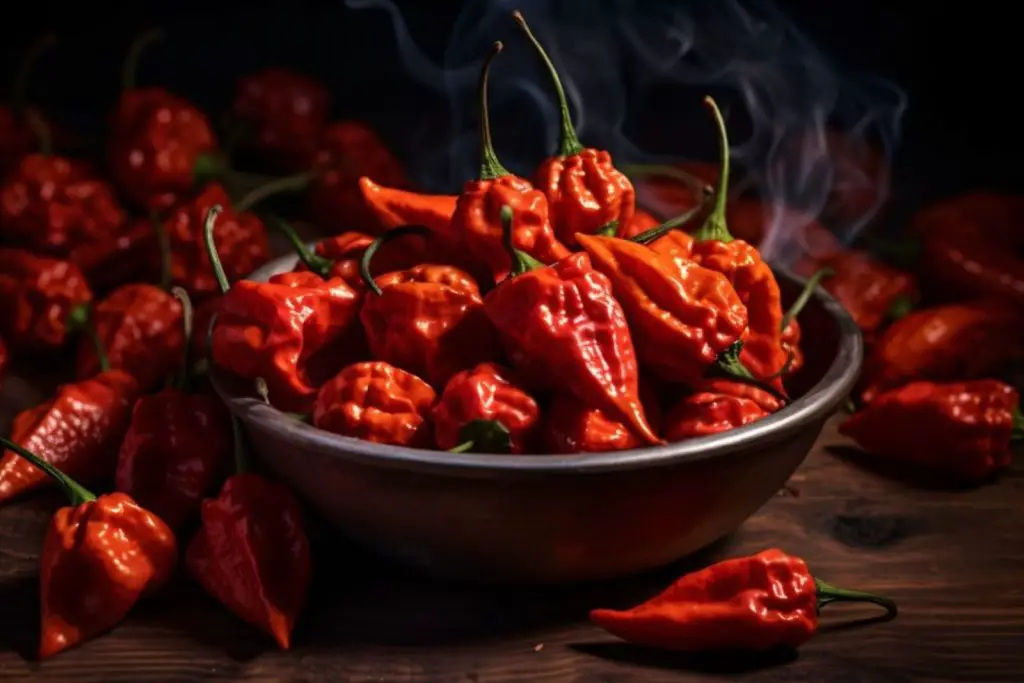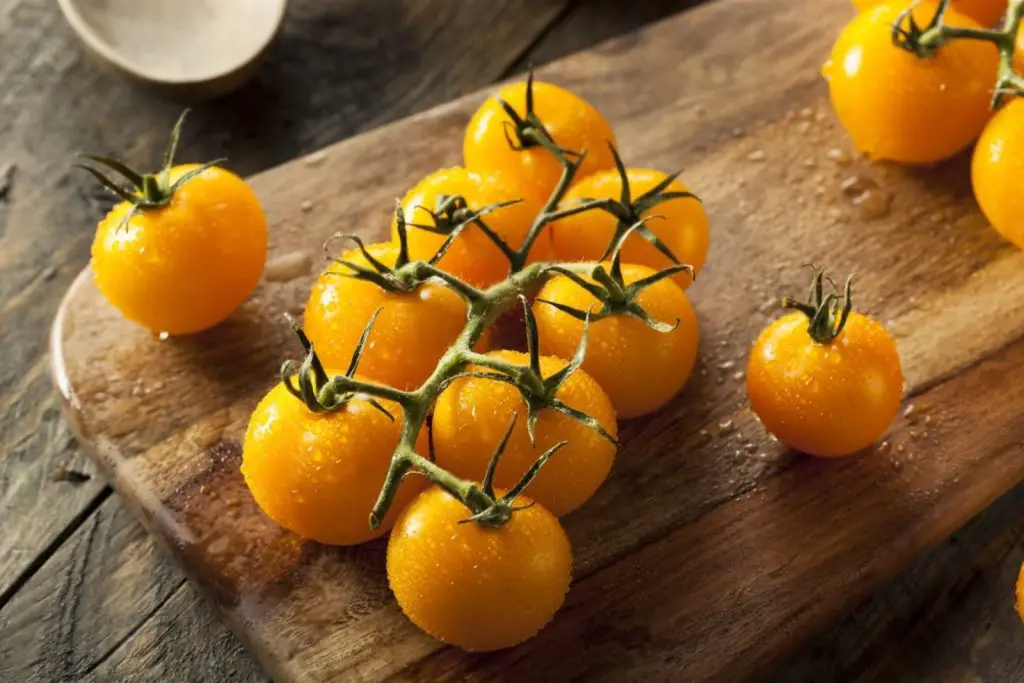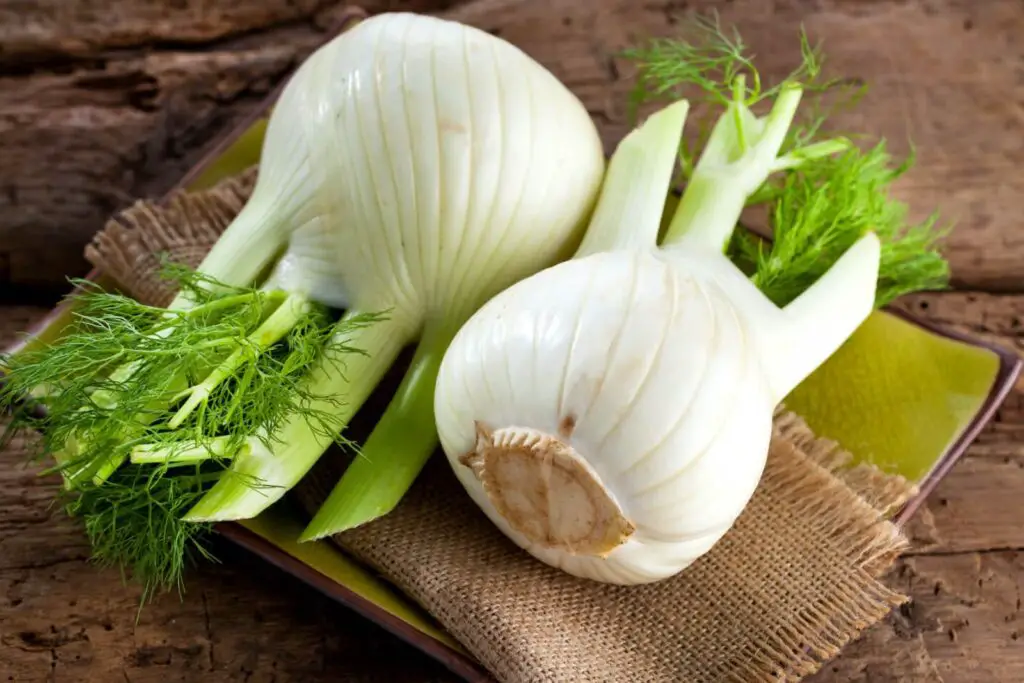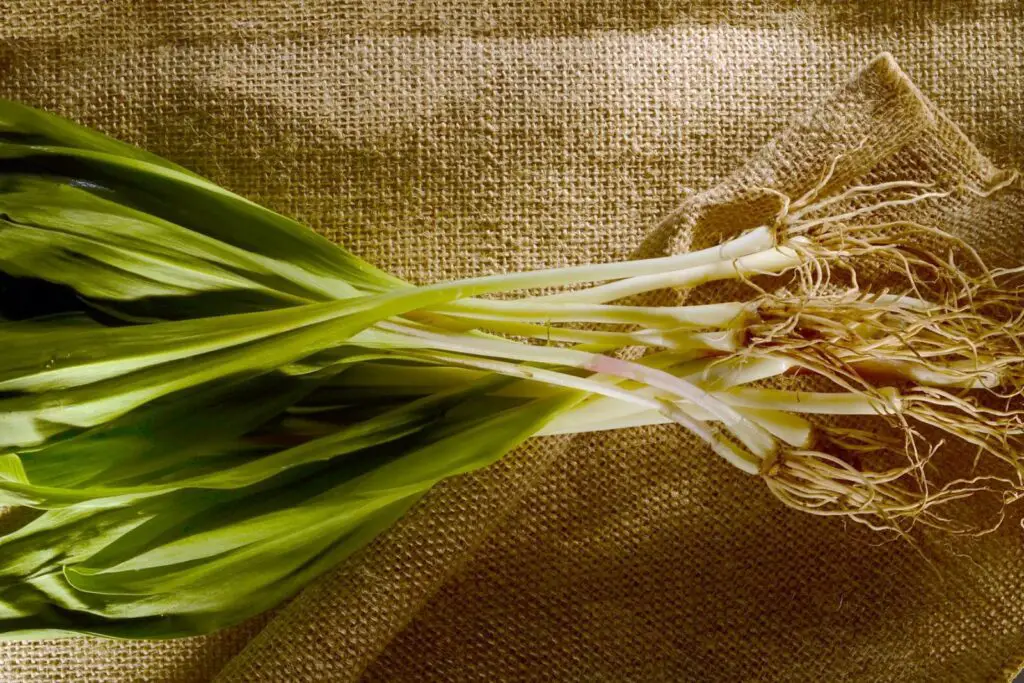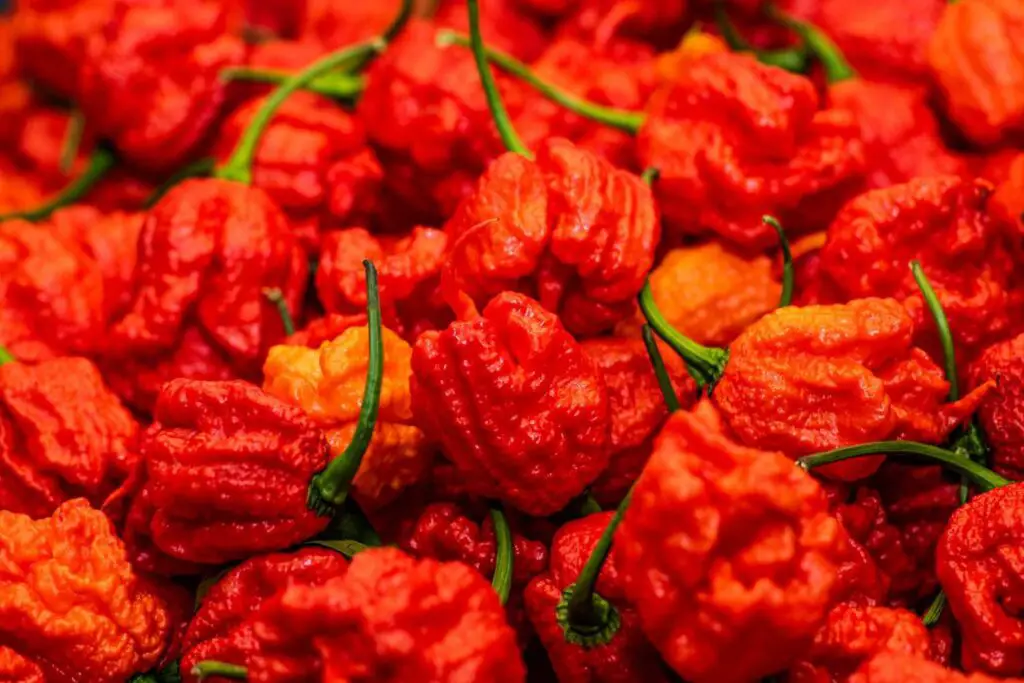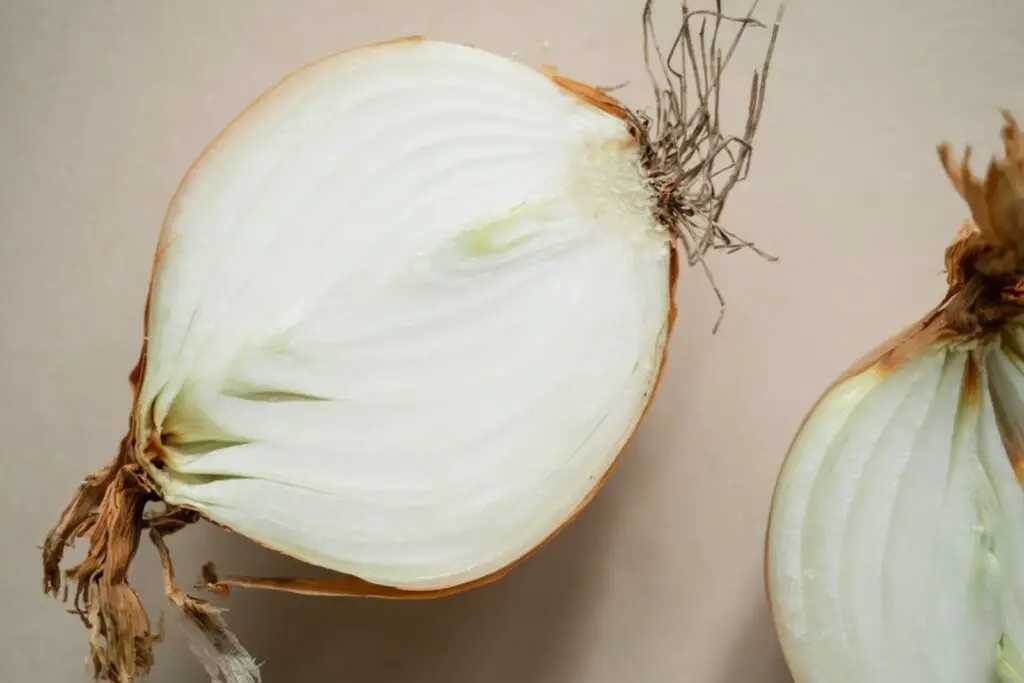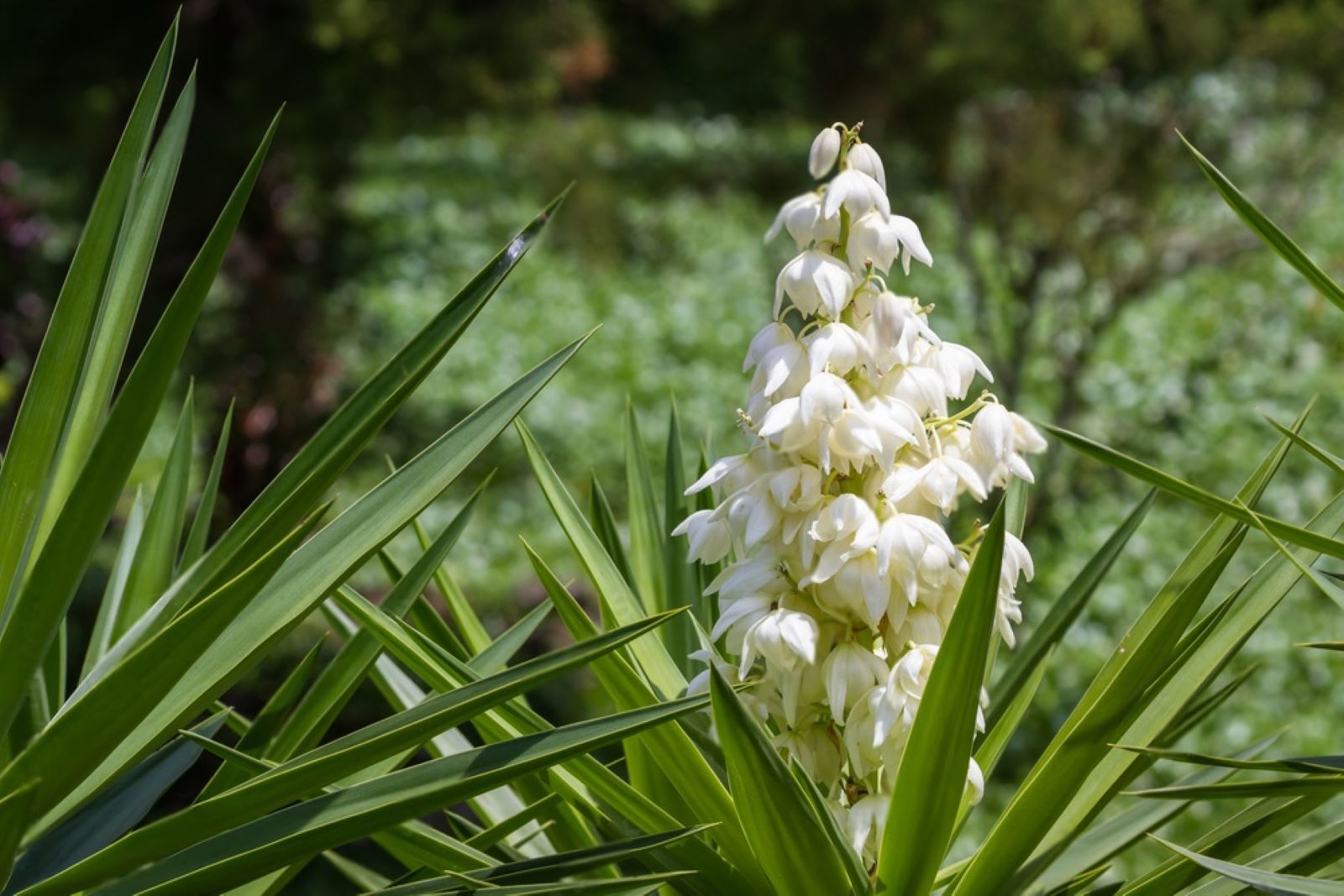
Yucca is a starchy root vegetable that is commonly used in various cuisines around the world. It has a slightly sweet and nutty flavor and is often used as a substitute for potatoes. If you have a surplus of yucca or want to enjoy it even when it’s out of season, freezing is a great option. Freezing yucca can help preserve its freshness and ensure that you have a ready supply for future use. In this article, we will provide a step-by-step guide on how to freeze yucca while retaining its texture and flavor.
Follow these steps to freeze yucca:
- Step 1: Select fresh yucca roots
- Step 2: Wash and peel the roots
- Step 3: Cut into desired shapes
- Step 4: Blanch the yucca
- Step 5: Drain and dry the yucca
- Step 6: Arrange the yucca for freezing
- Step 7: Flash-freeze the yucca
- Step 8: Package and seal the yucca
- Step 9: Label and date the packages
- Step 10: Store in the freezer
Step 1: Select fresh yucca roots
When freezing yucca, it is crucial to start with fresh and high-quality roots. Choosing the right yucca roots will not only ensure the best texture and flavor after freezing but also help extend the shelf life of the frozen yucca. Here’s why selecting fresh yucca roots is important:
- Optimal texture: Fresh yucca roots have a firm and crisp texture, which is ideal for freezing. They hold their shape better during the freezing process and maintain a pleasant texture when thawed and cooked later on.
- Enhanced flavor: Fresh yucca roots have a natural sweetness and nutty flavor that adds depth to various dishes. By starting with fresh yucca roots, you can preserve the distinct flavor profile of the vegetable even after freezing.
- Nutritional benefits: Yucca is a nutritious vegetable, rich in vitamins, minerals, and dietary fiber. Selecting fresh roots ensures that you retain the maximum nutritional value of the yucca even after it has been frozen.
- Extended shelf life: Freezing fresh yucca roots helps preserve their freshness for a longer period. By choosing roots that are free from blemishes and have a smooth skin, you reduce the risk of spoilage and maintain the quality of the yucca during storage.
When selecting fresh yucca roots, look for roots that are firm to the touch and free from soft spots, mold, or other signs of decay. The skin should be smooth and unblemished, without any discoloration. Avoid yucca roots that appear wrinkled or dried out, as they may have already started to deteriorate.
Step 2: Wash and peel the roots
After selecting fresh yucca roots for freezing, the next step is to properly wash and peel them. This process is essential to ensure that any dirt, debris, or residual substances are removed, and the tough outer skin of the yucca is peeled away. Here’s why washing and peeling the yucca roots is important:
- Hygiene and cleanliness: Yucca roots, like any other root vegetable, can accumulate dirt, soil, or other contaminants during harvesting and transportation. Washing them under running water helps remove any impurities, ensuring that the frozen yucca remains clean and safe for consumption.
- Removing residual substances: Yucca roots may sometimes have a sticky sap or a waxy coating on their surface. Washing the roots helps eliminate any residue that may affect the texture or flavor of the frozen yucca.
- Eliminating potential allergens: Some individuals may have allergies or sensitivities to certain substances that can be present on the yucca roots, such as dust, pollen, or pesticide residues. Thoroughly washing the roots minimizes the risk of allergic reactions when consuming the frozen yucca later on.
- Peeling the tough outer skin: Yucca roots have a thick and rough outer skin that is not pleasant to eat. Peeling the skin with a vegetable peeler removes the tough layer, revealing the softer and edible flesh beneath. This enhances the overall texture and taste of the yucca after freezing and cooking.
When washing the yucca roots, gently scrub them with your hands or a soft brush under running water. Pay special attention to the crevices and any hard-to-reach areas where dirt might be trapped. Thoroughly rinse off any residue before moving on to the peeling process.
To peel the yucca roots, use a vegetable peeler or a sharp knife. Start at one end of the root and carefully peel away the tough outer skin, moving downward in long strokes. Ensure that you remove all the brownish or grayish outer layers, exposing the white or creamy flesh of the yucca.
Can you freeze yucca in its natural state without peeling the skin off?
It is not recommended to freeze yucca in its natural state without peeling the skin off. The skin of yucca contains a protective wax layer that can affect the texture and taste of the yucca when frozen. It is best to peel the yucca before freezing to ensure optimal quality and to prevent any undesirable effects on the final product.
Step 3: Cut into desired shapes
Once the yucca roots have been washed and peeled, the next step in the freezing process is to cut them into the desired shapes. This step allows you to customize the size and form of the yucca to suit your preferences and intended use. Here’s why cutting the yucca roots into desired shapes is important:
- Convenience in cooking: By cutting the yucca roots into manageable pieces before freezing, you make it more convenient to use them later on. Smaller or uniform shapes, such as chunks, cubes, or strips, cook more evenly and require less preparation time when you decide to incorporate the frozen yucca into your recipes.
- Versatility in culinary applications: Different recipes call for yucca in various shapes and forms. By cutting the yucca roots into different shapes, you have more options for how to use them in your cooking. For example, smaller cubes may be ideal for stews or soups, while longer strips can be used for stir-fries or roasted dishes.
- Improved texture after freezing: Cutting the yucca into smaller pieces can help maintain its texture when frozen and cooked. Smaller shapes freeze faster and more uniformly, reducing the risk of ice crystal formation and resulting in better texture retention.
- Portion control: Cutting the yucca roots into desired shapes allows for better portion control. You can measure and freeze the yucca in portioned amounts, making it easier to thaw and use only what you need for each meal, preventing unnecessary waste.
When cutting the yucca roots, use a sharp knife and a sturdy cutting board. Ensure that your knife is large enough to handle the size of the roots and always exercise caution while handling sharp objects.
Consider the intended use of the frozen yucca when determining the shape to cut. If you plan to use it in stews or soups, smaller chunks or cubes are suitable. If you prefer to roast or sauté the yucca, cutting them into longer strips or wedges may be more appropriate.
Step 4: Blanch the yucca
Blanching is a crucial step in the process of freezing yucca. It involves briefly boiling the yucca pieces and then rapidly cooling them down in an ice bath. Blanching serves several important purposes and helps preserve the color, texture, and flavor of the yucca. Here’s why blanching is necessary when freezing yucca:
- Enzyme deactivation: Yucca contains enzymes that, if left untreated, can cause discoloration, texture degradation, and flavor changes over time. Blanching yucca in boiling water helps inactivate these enzymes, preserving the natural quality of the vegetable during freezing.
- Retention of color: Blanching helps maintain the vibrant color of the yucca. The brief exposure to high heat helps to set the color pigments and slows down their deterioration during freezing and storage. This ensures that the frozen yucca retains its appealing appearance when cooked later on.
- Texture preservation: By blanching the yucca, the cell structure of the vegetable is partially cooked. This process helps to retain the desired texture and firmness of the yucca after freezing. It prevents the yucca from becoming overly soft or mushy during storage and subsequent cooking.
- Flavor retention: Blanching yucca briefly in boiling water helps to lock in its natural flavors. It ensures that the frozen yucca maintains its distinct taste and nutty sweetness when thawed and cooked later on. Blanching also removes any undesirable off-flavors or bitterness that may be present in raw yucca.
To blanch yucca, follow these steps:
- Bring a pot of water to a rolling boil. The pot should be large enough to accommodate the yucca pieces without overcrowding.
- Carefully add the yucca pieces to the boiling water. Ensure that the water continues to boil during the blanching process.
- Boil the yucca for 3-5 minutes. The exact timing may vary depending on the size and thickness of the yucca pieces. Aim for a slight tenderness without fully cooking the yucca.
- Using a slotted spoon or tongs, remove the blanched yucca from the boiling water and immediately transfer them to an ice bath. The ice bath rapidly cools down the yucca, stopping the cooking process and preserving their texture and color.
- Let the yucca sit in the ice bath for the same amount of time as the blanching period, typically 3-5 minutes.
- Drain the yucca thoroughly and pat them dry before proceeding with the next steps of freezing.
Step 5: Drain and dry the yucca
After blanching the yucca, it is important to drain and thoroughly dry the yucca pieces before proceeding with the freezing process. Removing excess moisture from the yucca is crucial for preventing freezer burn and maintaining the quality of the frozen yucca. Here’s why draining and drying the yucca is necessary:
- Prevention of freezer burn: Freezer burn occurs when moisture on the surface of the food turns into ice crystals and then evaporates, causing dehydration. This can result in dry, discolored patches on the yucca and negatively impact its texture and taste. By draining and drying the yucca, you minimize the risk of freezer burn and ensure that the frozen yucca remains in optimal condition.
- Texture preservation: Excess moisture in the yucca can lead to ice crystal formation during freezing, which can affect its texture. When water freezes and expands, it can cause cell walls to rupture, resulting in a mushy or watery texture upon thawing and cooking. Draining and drying the yucca before freezing helps minimize the presence of excess moisture and helps maintain its desired texture.
- Prevention of ice formation: Drying the yucca reduces the likelihood of ice formation during freezing. Ice crystals can damage the cellular structure of the yucca and negatively impact its overall quality. By ensuring that the yucca is as dry as possible, you minimize the formation of ice crystals and help preserve its natural texture and flavor.
To drain and dry the yucca:
- Using a slotted spoon or a colander, carefully transfer the blanched yucca pieces from the ice bath to allow excess water to drain off.
- Place the yucca pieces on a clean kitchen towel or paper towels. Arrange them in a single layer to facilitate faster drying.
- Gently pat the yucca pieces with the towel or paper towels to absorb any remaining moisture. Be careful not to apply excessive pressure, as this may damage the yucca.
- Allow the yucca to air dry for a few minutes, or you can lightly fan them to speed up the drying process. Ensure that the yucca is completely dry before proceeding to the next steps of freezing.
Step 6: Arrange the yucca for freezing
After draining and drying the yucca, the next step is to arrange the yucca pieces in a way that promotes efficient freezing and prevents them from sticking together. Properly arranging the yucca on a baking sheet or tray before freezing is crucial for maintaining individual pieces and facilitating easy handling later on. Here’s why arranging the yucca for freezing is important:
- Prevent sticking: Yucca pieces that come into contact with each other during freezing can stick together, making it difficult to separate them later on. By arranging the yucca in a single layer with some space between each piece, you minimize the risk of sticking and ensure that they can be easily separated when needed.
- Even freezing: Placing the yucca pieces in a single layer allows for even and consistent freezing. It ensures that each piece freezes at the same rate, preserving their quality and preventing the formation of large ice crystals that can negatively affect texture and taste.
- Convenient portioning: Arranging the yucca in a single layer provides the opportunity for individual piece freezing. This means that once the yucca is frozen, you can easily take out the desired amount for each recipe without having to thaw the entire batch.
To arrange the yucca for freezing:
- Prepare a baking sheet or tray by lining it with parchment paper. The parchment paper prevents the yucca from sticking to the surface and makes it easier to remove them after freezing.
- Place the dried yucca pieces on the lined baking sheet or tray, ensuring they are in a single layer and not touching each other. Leave some space between each piece to promote even freezing.
- If you have a large batch of yucca, you may need to use multiple baking sheets or trays to accommodate all the pieces. It’s important to maintain the single layer and spacing between the yucca on each tray.
- Once the yucca is arranged, carefully transfer the baking sheet or tray to the freezer. Make sure it is placed on a flat surface so that the yucca pieces remain in their designated positions.
- Allow the yucca to freeze completely. This typically takes several hours, depending on the size and thickness of the yucca pieces.
Step 7: Flash-freeze the yucca
After arranging the yucca pieces on a baking sheet or tray, the next step is to flash-freeze them. Flash-freezing involves rapidly freezing the yucca pieces individually, ensuring that they freeze quickly and remain separate when stored. This step is essential for preventing clumping and facilitating easy portioning and usage of the frozen yucca. Here’s why flash-freezing the yucca is important:
- Prevent clumping: Flash-freezing the yucca pieces individually prevents them from sticking together and forming clumps during storage. When yucca pieces freeze slowly or come into contact with each other before freezing, they have a higher chance of sticking together. Flash-freezing quickly freezes each piece separately, minimizing the risk of clumping.
- Maintain individuality: Flash-freezing ensures that each yucca piece maintains its individual shape and integrity during the freezing process. It allows you to easily remove the desired amount of yucca from the freezer without thawing the entire batch, as the pieces remain separate and readily accessible.
- Even freezing and texture preservation: Flash-freezing promotes even freezing, which is crucial for preserving the texture and quality of the yucca. When frozen rapidly, smaller ice crystals form, reducing the chance of cell damage and maintaining a better texture upon thawing and cooking.
To flash-freeze the yucca:
- Transfer the baking sheet or tray with the arranged yucca pieces to the freezer. Place it on a flat surface to ensure that the yucca remains in their designated positions.
- Let the yucca pieces freeze for about 1-2 hours, or until they are firm. The exact freezing time may vary depending on the size and thickness of the yucca pieces, as well as the temperature of your freezer.
- Check the yucca periodically to ensure they are completely frozen. They should be firm to the touch and not easily bendable.
- Once the yucca pieces are fully frozen, remove the baking sheet or tray from the freezer.
- Proceed to the next step of packaging and sealing the yucca for long-term storage.
Is flash freezing necessary for freezing Yucca?
Flash freezing is not necessary for freezing yucca, but it can be beneficial. Flash freezing involves quickly freezing the yucca at very low temperatures to minimize ice crystal formation and preserve the texture and quality. While it’s not mandatory, using a freezer that can achieve lower temperatures or spreading the yucca pieces in a single layer on a baking sheet and placing them in the coldest part of the freezer can help facilitate faster freezing and maintain better quality during storage.
Step 8: Package and seal the yucca
After flash-freezing the yucca pieces, it’s time to package and seal them for long-term storage in the freezer. Proper packaging helps protect the yucca from freezer burn and maintain their quality over an extended period. Airtight containers or freezer bags are commonly used for this purpose. Here’s why packaging and sealing the yucca is important:
- Protection from freezer burn: Freezer burn occurs when food is exposed to air inside the freezer, leading to dehydration and deterioration of quality. Proper packaging creates a barrier between the yucca and the surrounding air, reducing the risk of freezer burn. Freezer burn can result in dry, discolored patches on the yucca and negatively impact their texture and flavor.
- Minimizing moisture loss: Packaging the yucca in airtight containers or freezer bags helps minimize moisture loss during freezing. Excessive exposure to air can cause the yucca to become dry and lose their natural moisture, affecting their texture and taste. By removing as much air as possible from the packaging, you help preserve the moisture content and overall quality of the yucca.
- Organization and space efficiency: Properly packaging the yucca allows for organized storage in the freezer. Freezer bags or containers help keep the yucca pieces together, preventing them from scattering and making it easier to locate and access them when needed. Additionally, proper packaging helps optimize freezer space and prevents the yucca from getting crushed or damaged.
To package and seal the yucca:
- Prepare airtight freezer bags or containers that are suitable for freezing. Ensure they are clean and in good condition.
- Take the flash-frozen yucca pieces from the baking sheet or tray and transfer them into the freezer bags or containers. Arrange them in a single layer or stack them neatly, depending on the available space and your preference.
- For freezer bags, squeeze out as much air as possible before sealing them. One effective method is to close the bag almost completely, leaving a small opening, and then carefully press out the remaining air before sealing it tightly. If using containers, ensure they have a tight-fitting lid to create an airtight seal.
- Label the freezer bags or containers with the current date using a marker. This helps you keep track of the yucca’s storage time and allows you to use the oldest batches first.
- Place the sealed yucca packages in the freezer, making sure to arrange them in a way that maximizes space and allows for easy retrieval.
Step 9: Label and date the packages
Labeling and dating the packages of frozen yucca is an essential step in the freezing process. It helps you keep track of the contents, storage time, and ensures that you use the oldest packages first. Proper labeling provides important information that allows for efficient organization and usage of the frozen yucca. Here’s why labeling and dating the packages is important:
- Identification of contents: By labeling each package with the contents (yucca), you can easily identify what is stored inside without having to open or guess. This is especially useful if you have multiple types of frozen foods in your freezer. Clear identification prevents confusion and saves time when searching for specific items.
- Storage time tracking: Date labeling allows you to keep track of when the yucca was frozen. This information is crucial for monitoring the storage time and ensuring that the yucca is used within a reasonable period. Over time, the quality of frozen food can degrade, and having the date of freezing helps you identify the oldest packages and prioritize their use to prevent food waste.
- Quality control: By noting down any other relevant information on the label, such as blanching or cooking instructions, you can ensure that the frozen yucca is prepared appropriately when it is time to use it. This promotes consistent quality and proper handling of the frozen yucca.
To label and date the packages:
- Use a marker or label stickers that are suitable for freezer conditions. Make sure they are waterproof and won’t smudge or fade.
- On each package of frozen yucca, write down the contents (yucca) clearly on the label.
- Add the date of freezing to the label. Write the month, day, and year to provide a specific reference point.
- Consider including any additional relevant information on the label, such as blanching instructions or cooking tips, to aid in preparation later on.
- Affix the label securely to the package, making sure it is visible and won’t peel off easily during storage.
- Repeat the labeling and dating process for each package of frozen yucca.
Step 10: Store in the freezer
Once you have labeled and dated the packages of frozen yucca, the final step is to store them properly in the freezer. Correct storage conditions play a vital role in maintaining the quality and longevity of the frozen yucca. Here’s why storing the packages in the freezer is important:
- Temperature control: The ideal temperature for freezing yucca is below 0°F (-18°C). Freezing at this temperature ensures that the yucca remains in a frozen state and prevents the growth of bacteria, which can lead to food spoilage. It is crucial to set your freezer to the appropriate temperature and regularly monitor it to ensure it stays within the desired range.
- Preservation of quality: Storing the yucca in the freezer at the recommended temperature helps preserve its quality. The low temperature inhibits enzymatic activity and slows down the degradation processes, such as texture changes and nutrient loss. This ensures that the yucca retains its flavor, texture, and nutritional value for an extended period.
- Prevention of freezer burn: Proper storage in the freezer reduces the risk of freezer burn. Freezer burn occurs when the surface of the food is exposed to air, causing moisture loss and deterioration. Placing the labeled packages in a stable position and ensuring they are airtight minimizes air exposure, protecting the yucca from freezer burn and maintaining its overall quality.
To store the packages of yucca in the freezer:
- Find a stable position in the freezer where the packages can be placed securely without the risk of tipping or falling.
- Arrange the labeled packages in a way that maximizes space and allows for easy access.
- Ensure that the packages are stored away from the freezer door, as this area experiences temperature fluctuations when opened frequently.
- Maintain proper airflow by leaving space around the packages. Avoid overcrowding, as it may hinder efficient freezing and increase the risk of uneven temperature distribution.
- Close the freezer door securely, ensuring a tight seal to maintain the desired freezing temperature consistently.
- Regularly monitor the freezer temperature and adjust it if necessary to ensure it stays below 0°F (-18°C).
How long can you store frozen yucca before it starts to lose its quality?
When properly stored in airtight packaging, frozen yucca can retain its quality for up to 6 to 8 months. However, for the best taste and texture, it is recommended to consume frozen yucca within 3 to 4 months. Over time, frozen yucca may start to develop freezer burn or lose its natural flavor and texture. It’s important to label the packaging with the date of freezing to keep track of its storage duration and ensure optimal quality.
Other related questions
How do I properly defrost yucca?
To properly defrost yucca, it is best to transfer it from the freezer to the refrigerator and let it thaw slowly overnight or for about 24 hours. This gradual thawing process helps maintain the texture and flavor of the yucca. Once thawed, you can cook or prepare the yucca according to your desired recipe. Avoid using quick thawing methods like microwaving, as they can result in uneven thawing and affect the yucca’s quality.
Can I refreeze previously thawed Yucca?
It is generally not recommended to refreeze yucca that has been previously thawed. When yucca is thawed, the process can cause changes in its texture and moisture content, which may affect its quality when refrozen. Additionally, repeated freezing and thawing can increase the risk of bacterial growth and compromise food safety. It is best to thaw only the amount of yucca that you plan to use and avoid refreezing any leftovers.
How do I know if my frozen Yucca has gone bad?
There are a few signs to look for to determine if frozen yucca has gone bad. Firstly, check for any visible signs of freezer burn, such as discoloration or dry, shriveled patches. Secondly, smell the yucca for any off or rancid odors. If the yucca emits an unpleasant smell, it is an indication of spoilage. Lastly, if the texture of the yucca feels mushy or slimy when thawed, it is likely spoiled and should not be consumed. When in doubt, it is better to err on the side of caution and discard any frozen yucca that appears or smells suspicious.
Can I use frozen Yucca with the fresh ones?
Yes, you can use frozen yucca in combination with fresh yucca in your recipes. However, it’s important to keep in mind that frozen yucca may have a slightly different texture compared to fresh yucca once it’s thawed. Frozen yucca tends to be softer and may have a higher moisture content. Adjusting the cooking time or method accordingly can help ensure that both the fresh and frozen yucca are cooked evenly and reach the desired consistency. It’s also worth noting that the flavor of frozen yucca may be slightly altered compared to fresh yucca, so consider this when combining them in recipes.
Is it possible to freeze yucca puree or mashed yucca?
Yes, it is possible to freeze yucca puree or mashed yucca. To freeze yucca puree or mashed yucca, it’s important to allow it to cool completely before transferring it to airtight containers or freezer bags. Ensure proper sealing to prevent freezer burn. Frozen yucca puree or mashed yucca can be stored for up to 3 to 4 months and can be thawed and used in various recipes as needed.

